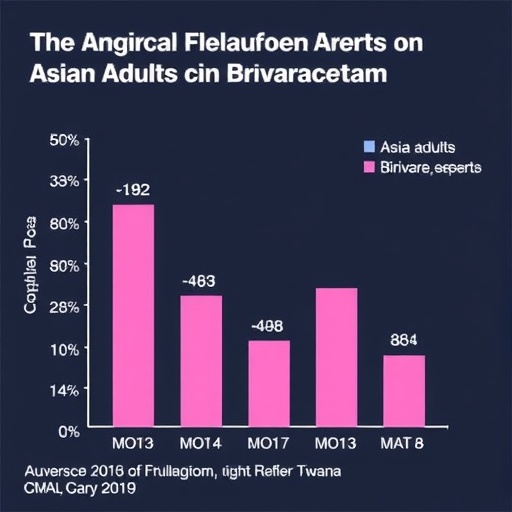Philadelphia, May 30, 2018 Biological Psychiatry has published a new study revising the outdated estimates of the prevalence of eating disorders in the United States (US). The new estimates were based on a nationally-representative sample of 36,309 adults–the largest national sample of US adults ever studied. The findings estimate that 0.80 percent of US adults will be affected by anorexia nervosa in their lifetime; 0.28 percent will be affected by bulimia nervosa; and 0.85 percent will be affected by binge eating disorder.
Importantly, the study provides the first prevalence estimates using the current definitions of eating disorders. Although the diagnostic criteria for several common eating disorders were changed with the 2013 publication of the "Diagnostic and Statistical Manual of Mental Disorders (DSM)-5", the rates of eating disorders hadn't been studied since 2007.
"Our study confirms that eating disorders are common, are found in both men and women and across ethnic/racial groups, occur throughout the lifespan, and are associated with impairments in psychosocial functioning," said first author Tomoko Udo, PhD, of University at Albany, New York. Dr. Udo conducted the study alongside Carlos Grilo, PhD, of Yale University School of Medicine.
"The prevalence and impact of eating disorders continues to be underestimated in society. This definitive study should guide both research and policy development," said John Krystal, Editor of Biological Psychiatry.
The data analyzed in the study were from the 2012-2013 National Epidemiologic Survey Alcohol and Related Conditions (NESARC-III). In addition to lifetime estimates, the study found that 12-month estimates for anorexia nervosa, bulimia nervosa, and binge eating disorder were 0.05 percent, 0.14 percent, and 0.44 percent, respectively. The rates of anorexia nervosa were similar to previous estimates, but the researchers were surprised to find the rates of bulimia nervosa and binge eating disorder were lower than previous estimates.
"Many researchers and clinicians expected higher estimates than earlier studies as a result of 'loosening' of diagnostic criteria for eating disorders," said Dr. Udo, referring to the changes made to criteria in the DSM-5. She added that more large-scale epidemiological studies will be needed to explain the reason for these unexpected findings and to better understand the impact of changes in diagnostic criteria.
The disorders occurred across different ages and were persistent, lasting for years. The study also reported that the eating disorders included in analysis often interfere with normal daily activities and social relationships. According to Dr. Udo, the findings show that eating disorders represent an important public health problem and demonstrate the importance of screening for eating disorders across all socio-demographic groups. "Binge eating disorder, a new 'formal' diagnosis in the DSM-5, is especially important to screen for and identify, as it is associated with substantially increased risk for obesity yet often goes unrecognized," she said.
"In many communities, specialty treatment for eating disorders is not as easily accessible as for other psychiatric and medical conditions, and thus improving access to care is an important priority for healthcare systems," said Dr. Udo.
###
Notes for editors
The article is "Prevalence and Correlates of DSM-5 Eating Disorders in Nationally Representative Sample of United States Adults," by Tomoko Udo and Carlos M. Grilo (https://doi.org/10.1016/j.biopsych.2018.03.014). It appears in Biological Psychiatry, published by Elsevier.
Copies of this paper are available to credentialed journalists upon request; please contact Rhiannon Bugno at [email protected] or +1 214 648 0880. Journalists wishing to interview the authors may contact Tomoko Udo at [email protected] or +1 518 486 5572.
The authors' affiliations and disclosures of financial and conflicts of interests are available in the article.
John H. Krystal, MD, is Chairman of the Department of Psychiatry at the Yale University School of Medicine, Chief of Psychiatry at Yale-New Haven Hospital, and a research psychiatrist at the VA Connecticut Healthcare System. His disclosures of financial and conflicts of interests are available here.
About Biological Psychiatry
Biological Psychiatry is the official journal of the Society of Biological Psychiatry, whose purpose is to promote excellence in scientific research and education in fields that investigate the nature, causes, mechanisms and treatments of disorders of thought, emotion, or behavior. In accord with this mission, this peer-reviewed, rapid-publication, international journal publishes both basic and clinical contributions from all disciplines and research areas relevant to the pathophysiology and treatment of major psychiatric disorders.
The journal publishes novel results of original research which represent an important new lead or significant impact on the field, particularly those addressing genetic and environmental risk factors, neural circuitry and neurochemistry, and important new therapeutic approaches. Reviews and commentaries that focus on topics of current research and interest are also encouraged.
Biological Psychiatry is one of the most selective and highly cited journals in the field of psychiatric neuroscience. It is ranked 6th out of 142 Psychiatry titles and 10th out of 258 Neurosciences titles in the Journal Citations Reports® published by Thomson Reuters. The 2016 Impact Factor score for Biological Psychiatry is 11.412.
About Elsevier
Elsevier is a global information analytics business that helps institutions and professionals advance healthcare, open science and improve performance for the benefit of humanity. Elsevier provides digital solutions and tools in the areas of strategic research management, R&D performance, clinical decision support and professional education, including ScienceDirect, Scopus, SciVal, ClinicalKey and Sherpath. Elsevier publishes over 2,500 digitized journals, including The Lancet and Cell, more than 38,000 e-book titles and many iconic reference works, including Gray's Anatomy. Elsevier is part of RELX Group, a global provider of information and analytics for professionals and business customers across industries. http://www.elsevier.com
Media contact
Rhiannon Bugno
Editorial Office, Biological Psychiatry
+1 214 648 0880
[email protected]
Media Contact
Rhiannon Bugno
[email protected]
214-648-0880
@elseviernews
http://www.elsevier.com
https://www.elsevier.com/about/press-releases/research-and-journals/prevalence-of-eating-disorders-taken-from-largest-sample-in-the-united-states
Related Journal Article
http://dx.doi.org/10.1016/j.biopsych.2018.03.014




